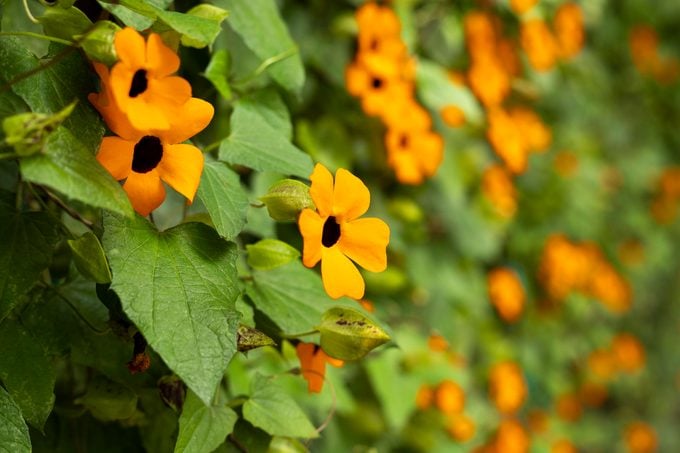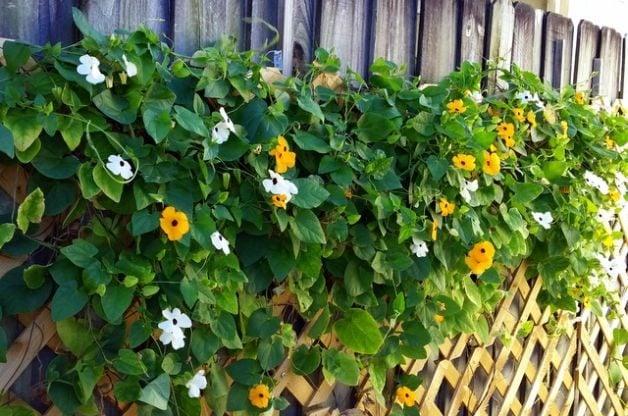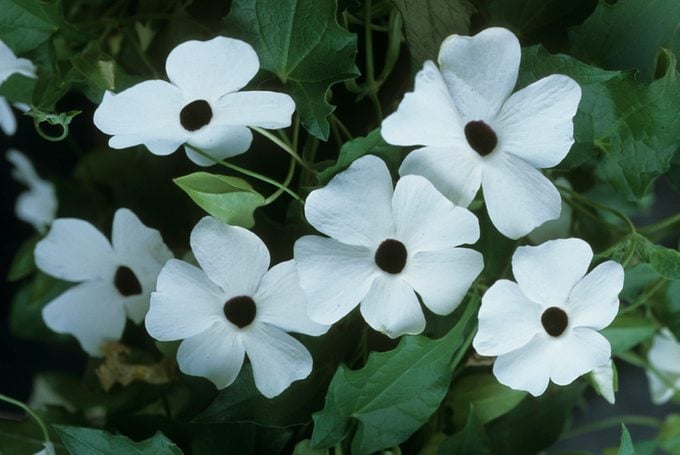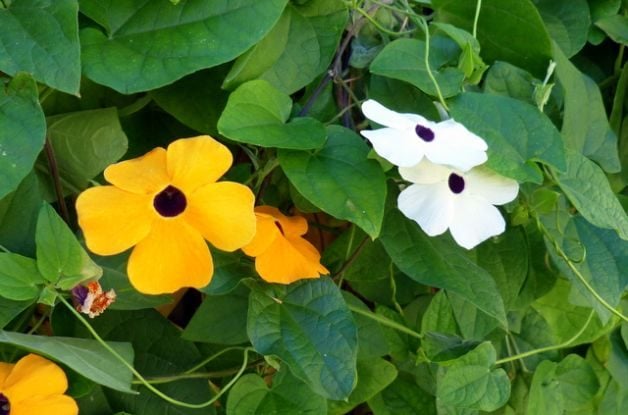Black-Eyed Susan Vine Adds Vertical Garden Interest
Updated: Mar. 14, 2023
Looking for a fast-growing annual vine to adorn a trellis? Try black-eyed Susan vine and enjoy bright blooms until the first frost.
Our editors and experts handpick every product we feature. We may earn a commission from your purchases.

When you have a small yard, you take advantage of every bit of growing space. This past spring, I added a wood lattice trellis along my neighbor’s board fence so I could have some pretty blooms to look at instead of a blank wall of wood. On the recommendation of a friend, I decided to try growing black-eyed Susan vine on the trellis. I started it from seed and was pleased with both how easy it was to get going, and how very fast it took off!
Discover easy ways to use vining plants all around your garden.
Black-Eyed Susan Care Tips

- Black-eyed Susan vine
- Thunbergia alata
- Zones 9 to 10 or Annual
- Attracts bees, butterflies and hummingbirds
- Moist soil
- Full sun
This vine (Thunbergia alata) isn’t closely related to the other familiar native black-eyed Susans (Rudbeckia), but they share a similar coloration. Black-eyed Susan vine is a tropical plant native to Africa that has become a garden favorite. Pollinators love it, too! It isn’t particularly cold hardy, so anyone north of zone 9 has to grow it as an annual.

Fortunately, it’s easy to start from seed. For greater success with germination, soak the seeds in warm water overnight before planting. Transplant seedlings outdoors after the last frost. Northern gardeners can enjoy a beautiful container of trailing black-eyed Susan vine by mid-summer. You can also train it to climb a fence or trellis and use it as a groundcover. Plant in full sun to get the most flowers.
The University of Wisconsin Extension advises that gardeners should use caution before planting this vine in frost-free areas, as it may become invasive.
Check out the top 10 vines for hummingbirds.
Black-Eyed Susan Vine Colors

There are multiple cultivars to choose from with yellow and white flowers. There’s also a version called ‘Blushing Susie,’ that looks like the colors of a sunset sky. I’m planning to get my hands on some of these seeds to start soon, since I’ve had such luck with the yellow and white ones.
Looking for more vining plant options? Check out our list of fast growing vines and climbing flowers.




















